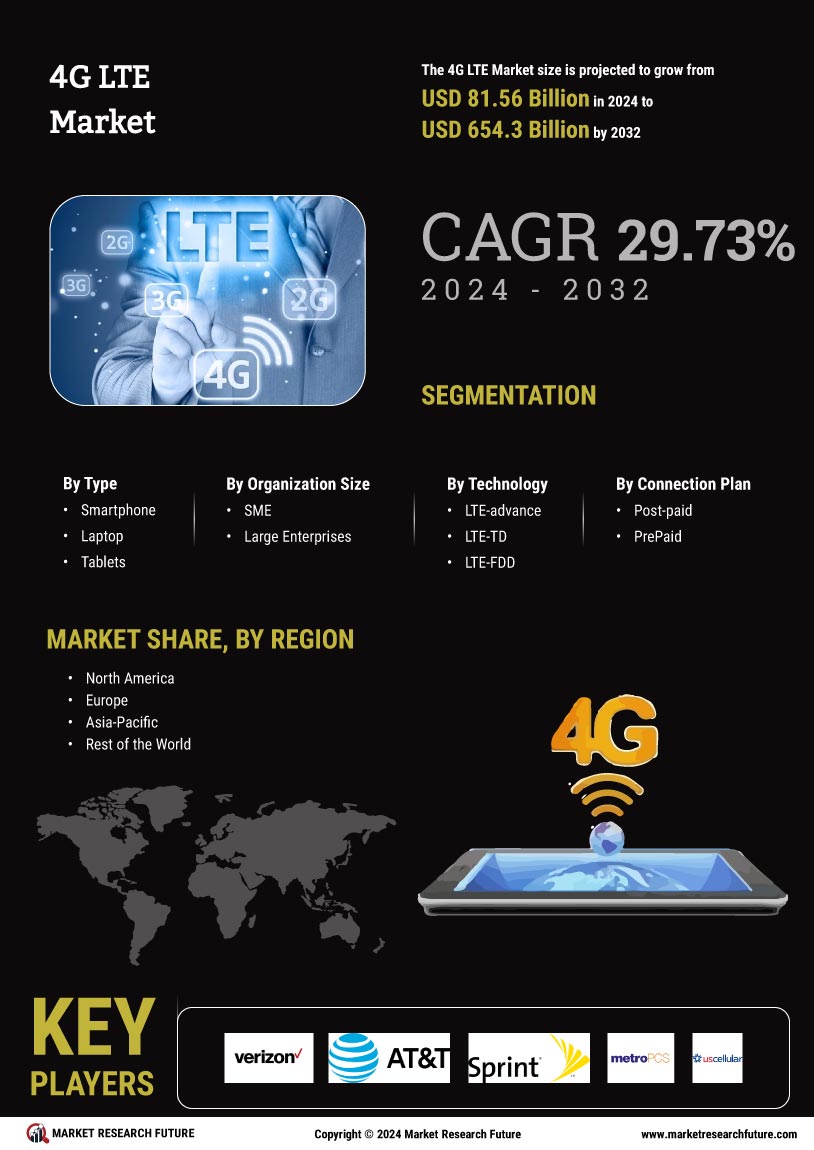Leading market players are investing heavily in research and development in order to expand their product lines, which will help the 4G LTE Market, grow even more. Market participants are also undertaking a variety of strategic activities to expand their global footprint, with important market developments including new product launches, contractual agreements, mergers and acquisitions, higher investments, and collaboration with other organizations. To expand and survive in a more competitive and rising market climate, 4G LTE industry must offer cost-effective items.
Manufacturing locally to minimize operational costs is one of the key business tactics used by manufacturers in the global 4G LTE industry to benefit clients and increase the market sector. In recent years, the 4G LTE industry has offered some of the most significant advantages to medicine. Major players in the 4G LTE Market, including Verizon Wireless (U.S.), AT&T (U.S.), Sprint Nextel (U.S.), MetroPCS (U.S.), U.S. Cellular (U.S.), S.K. Telecom (South Korea), Alcatel-Lucent (France), Bharti Airtel Ltd.(India), LM Ericsson (Sweden), Huawei Technologies Co.
Ltd. (China), Vodafone Group PLC (U.K.)and others, are attempting to increase market demand by investing in research and development operations.
Verizon Wireless, a prominent telecommunications company in the United States, has played a significant role in the 4G LTE Market. Verizon has established itself as a top supplier of 4G LTE Market services thanks to its strong presence and wide-ranging network coverage throughout the nation. In order to meet the various needs of customers and enterprises, the company provides a comprehensive selection of 4G LTE Market plans and gadgets. Verizon has been at the forefront of providing high-speed mobile data services, leveraging its cutting-edge network architecture to enable seamless internet connectivity, video streaming, and dependable phone communication.
Verizon's continued investment in network upgrades and the introduction of cutting-edge technologies like LTE-Advanced and LTE-Advanced Pro demonstrate its dedication to innovation. The firm has cemented its position as a significant participant in the 4G LTE industry, servicing millions of consumers across the United States, thanks to its unwavering focus on delivering exceptional network performance, as well as its customer-centric strategy and strong brand recognition.
MetroPCS, a subsidiary of T-Mobile US, is a well-known wireless carrier operating in the United States. The business has achieved tremendous progress in the 4G LTE industry and now provides its clients with cost-effective and dependable 4G LTE Market services. MetroPCS has established itself as a supplier of affordable solutions without sacrificing network quality by focusing on value-oriented programmes. A significant majority of the population is now covered by the company's 4G LTE Market network, especially in urban regions.
Customers of MetroPCS may easily access high-speed mobile data, stream films, and participate in a variety of online activities thanks to the wide selection of 4G LTE Market smartphones and devices the company offers. Due to MetroPCS's affiliation with the T-Mobile network, its customers will enjoy a robust and improved 4G LTE Market experience thanks to T-Mobile's enormous infrastructure and investments in cutting-edge technologies. MetroPCS continues to draw a wide range of customers thanks to its customer-centered philosophy and competitive pricing, earning a name for itself in the crowded 4G LTE Market in the United States.


















Leave a Comment